Physical therapy has emerged as one of the most effective non-pharmaceutical interventions for maintaining mobility, managing pain, and improving quality of life in aging Golden Retrievers. As these beloved companions enter their senior years, they face increased risks of arthritis, hip dysplasia, muscle weakness, and other mobility-related challenges that can significantly impact their daily activities and overall well-being. Canine physical therapy offers a comprehensive approach to addressing these age-related changes through targeted exercises, manual therapies, and specialized techniques designed to support the unique needs of senior dogs.
The field of veterinary rehabilitation has evolved dramatically over the past two decades, with evidence-based protocols now available for virtually every condition affecting senior Golden Retrievers. From post-surgical recovery to chronic arthritis management, physical therapy provides tools that can slow the progression of degenerative conditions, maintain functional mobility, and often reduce the need for pain medications. The key lies in understanding how to implement appropriate therapeutic interventions that match each dog’s specific needs, physical capabilities, and health status.
Golden Retrievers, with their naturally cooperative temperament and strong motivation to please, often make excellent candidates for physical therapy programs. Their size and structure, while predisposing them to certain orthopedic conditions, also make them suitable for a wide range of therapeutic modalities and exercises. The goal of physical therapy extends beyond simple pain management to encompass comprehensive wellness that supports active aging and maintains the joy and vitality that define these remarkable dogs throughout their golden years.
Understanding Canine Physical Therapy Fundamentals
Principles of Veterinary Rehabilitation
Canine physical therapy operates on established principles adapted from human rehabilitation medicine but modified to address the unique anatomical, physiological, and behavioral characteristics of dogs.
Tissue Healing Optimization: Physical therapy interventions are designed to promote optimal tissue healing by improving circulation, reducing inflammation, and providing appropriate mechanical stimulation that encourages proper collagen formation and tissue repair.
Pain Management Through Movement: Controlled movement and exercise can provide significant pain relief through multiple mechanisms, including endorphin release, gate control theory activation, and reduction of muscle tension and spasms.
Functional Restoration: The primary goal focuses on restoring or maintaining functional abilities rather than simply treating isolated problems. This approach emphasizes activities that directly impact daily life quality and independence.
Progressive Loading: Therapeutic exercises follow progressive loading principles, gradually increasing demands on tissues to promote strength, endurance, and functional capacity while avoiding overexertion or injury.
Physiological Benefits of Physical Therapy
Cardiovascular Health: Appropriate exercise programs support cardiovascular fitness, helping maintain heart health and circulation that becomes increasingly important in senior dogs.
Muscle Mass Preservation: Targeted strengthening exercises help combat age-related muscle loss (sarcopenia), maintaining the muscle mass necessary for mobility and metabolic health.
Joint Mobility Maintenance: Range-of-motion exercises and manual therapy techniques help preserve joint flexibility and prevent contractures that can develop with decreased activity.
Neurological Function Support: Balance and proprioceptive exercises help maintain the neurological connections essential for coordination and spatial awareness.
| Physiological System | Physical Therapy Benefits | Specific Techniques | Expected Outcomes |
|---|---|---|---|
| Musculoskeletal | Strength, flexibility, joint health | Strengthening exercises, stretching, manual therapy | Improved mobility, reduced pain |
| Cardiovascular | Enhanced circulation, cardiac fitness | Controlled aerobic exercise, swimming | Better endurance, circulation |
| Neurological | Balance, coordination, proprioception | Balance exercises, sensory stimulation | Improved stability, reduced fall risk |
| Lymphatic | Reduced swelling, improved drainage | Manual lymphatic drainage, exercise | Decreased inflammation, better healing |
Common Conditions Benefiting from Physical Therapy
Arthritis and Degenerative Joint Disease
Arthritis represents the most common indication for physical therapy in senior Golden Retrievers, affecting up to 80% of dogs over eight years old.
Early-Stage Arthritis Management: Physical therapy can significantly slow disease progression when implemented early, focusing on maintaining range of motion, supporting muscle strength, and managing inflammation through appropriate exercise.
Advanced Arthritis Support: Even in severe cases, physical therapy can improve comfort and function through pain management techniques, adaptive exercises, and environmental modifications that reduce joint stress.
Multi-Joint Involvement: Golden Retrievers often develop arthritis in multiple joints simultaneously, requiring comprehensive therapy programs that address the entire kinetic chain rather than isolated joints.
Hip Dysplasia Management
Hip dysplasia, a common inherited condition in Golden Retrievers, benefits significantly from structured physical therapy programs throughout all life stages.
Conservative Management: Many dogs with hip dysplasia can maintain excellent quality of life through physical therapy programs that strengthen supporting muscles, improve joint stability, and manage associated pain.
Post-Surgical Rehabilitation: Dogs undergoing hip surgery, including total hip replacement or femoral head ostectomy, require specialized rehabilitation protocols to optimize outcomes and return to function.
Weight Management Support: Physical therapy programs help dogs with hip dysplasia maintain appropriate body weight through safe, low-impact exercise that doesn’t exacerbate joint problems.
Spinal Conditions
Intervertebral Disc Disease: Golden Retrievers can develop disc problems that benefit from specific exercises designed to support spinal stability and reduce pressure on affected discs.
Spondylosis: Age-related spinal changes often respond well to mobility exercises, core strengthening, and pain management techniques that maintain functional movement.
Cervical Issues: Neck problems, whether from disc disease or arthritis, can be managed through targeted exercises and manual therapy techniques that preserve cervical mobility and reduce discomfort.
Physical Therapy Modalities and Techniques
Manual Therapy Approaches
Manual therapy forms the foundation of many canine physical therapy programs, providing hands-on techniques that address soft tissue restrictions, joint mobility, and pain management.
Soft Tissue Mobilization: Techniques including massage, myofascial release, and trigger point therapy help address muscle tension, improve circulation, and reduce pain associated with soft tissue dysfunction.
Joint Mobilization: Gentle joint mobilization techniques can help maintain or restore normal joint movement, reduce stiffness, and improve functional mobility.
Passive Range of Motion: Systematic movement of joints through their normal range helps maintain flexibility, prevent contractures, and provide gentle exercise when active movement is limited.
Stretching Programs: Targeted stretching exercises address specific muscle groups that tend to tighten with age or inactivity, helping maintain overall flexibility and movement quality.
Therapeutic Exercise Programs
Strengthening Exercises: Progressive strengthening programs target specific muscle groups that support joint stability and functional movement patterns.
| Exercise Type | Primary Targets | Equipment Needed | Progression Options |
|---|---|---|---|
| Sit-to-Stand | Hindlimb strength, core stability | None | Add repetitions, slow tempo, uneven surfaces |
| Walking Exercises | Overall conditioning, gait training | Leash, various surfaces | Distance, speed, inclines, obstacles |
| Balance Training | Proprioception, core strength | Wobble boards, balance pads | Surface difficulty, duration, distractions |
| Swimming | Total body conditioning, cardiovascular | Pool access, flotation aids | Duration, resistance, stroke patterns |
| Cavaletti Rails | Limb coordination, flexibility | Adjustable rails or poles | Height, spacing, speed variations |
Cardiovascular Conditioning: Appropriate aerobic exercise programs support overall health while respecting the limitations of aging bodies and existing health conditions.
Flexibility Training: Systematic stretching and mobility exercises help maintain the range of motion necessary for normal daily activities.
Proprioceptive Training: Balance and coordination exercises help maintain the neurological connections essential for safe movement and fall prevention.
Therapeutic Modalities
Hydrotherapy: Water-based exercise provides unique benefits for senior Golden Retrievers, including buoyancy support, resistance training, and cardiovascular conditioning with minimal joint stress.
Cold Laser Therapy: Low-level laser therapy can provide pain relief, reduce inflammation, and promote tissue healing through photobiological effects at the cellular level.
Electrical Stimulation: Various forms of electrical stimulation can provide pain relief, muscle strengthening, and neuromuscular re-education depending on the specific parameters used.
Ultrasound Therapy: Therapeutic ultrasound can help manage soft tissue restrictions, reduce inflammation, and promote tissue healing through thermal and non-thermal effects.
Hydrotherapy: The Gold Standard for Senior Dogs
Benefits of Water-Based Exercise
Hydrotherapy represents one of the most valuable therapeutic modalities available for senior Golden Retrievers, offering unique advantages that cannot be replicated through land-based exercises alone.
Buoyancy Effects: Water buoyancy can reduce weight-bearing forces by up to 90%, allowing dogs with severe arthritis or post-surgical restrictions to exercise comfortably while building strength and endurance.
Hydrostatic Pressure: Water pressure provides gentle compression that can reduce swelling, improve circulation, and provide proprioceptive feedback that enhances balance and coordination.
Resistance Properties: Water provides variable resistance that strengthens muscles throughout the full range of motion while remaining gentle on joints and soft tissues.
Temperature Benefits: Warm water therapy can help relax muscles, reduce stiffness, and improve circulation, while cooler water can provide anti-inflammatory effects.
Types of Hydrotherapy
Swimming: Free swimming allows for total body exercise with complete joint range of motion and cardiovascular conditioning. It’s particularly beneficial for dogs with multiple joint problems or those needing general conditioning.
Underwater Treadmill: Provides controlled exercise with adjustable water levels, speed settings, and the ability to target specific gait patterns and muscle groups. This modality offers more precise control than free swimming.
Whirlpool Therapy: Combines warm water immersion with gentle water movement to promote circulation, reduce muscle tension, and provide pain relief.
Cold Water Therapy: Brief cold water immersion or ice baths can provide anti-inflammatory effects and pain relief, particularly beneficial after intensive exercise sessions.
| Hydrotherapy Type | Primary Benefits | Ideal Candidates | Session Duration | Frequency |
|---|---|---|---|---|
| Swimming | Total body conditioning, joint mobility | Dogs with multiple joint issues | 10-30 minutes | 2-3 times weekly |
| Underwater Treadmill | Controlled gait training, specific muscle targeting | Post-surgical, gait abnormalities | 5-20 minutes | 2-4 times weekly |
| Whirlpool Therapy | Pain relief, circulation improvement | Acute inflammation, muscle tension | 10-15 minutes | As needed |
| Cold Water Therapy | Anti-inflammatory, pain management | Post-exercise, acute injuries | 30 seconds-5 minutes | After exercise sessions |
Assessment and Treatment Planning
Initial Evaluation Process
Comprehensive assessment forms the foundation of effective physical therapy programs, requiring detailed evaluation of multiple factors that influence treatment planning and goal setting.
Gait Analysis: Systematic evaluation of movement patterns at walk and trot helps identify asymmetries, compensations, and specific areas of dysfunction that need to be addressed.
Range of Motion Assessment: Measurement of joint flexibility in all major joints provides baseline data and helps identify specific restrictions that may limit function.
Strength Testing: Evaluation of muscle strength and bulk helps identify weaknesses that contribute to dysfunction and guides strengthening program development.
Pain Assessment: Systematic pain evaluation using validated scales helps establish baseline comfort levels and guides treatment intensity and progression.
Functional Evaluation: Assessment of daily activities such as rising, sitting, stair climbing, and walking helps identify specific functional limitations that impact quality of life.
Goal Setting and Treatment Planning
Short-Term Goals: Immediate objectives typically focus on pain reduction, inflammation management, and prevention of further deterioration while beginning gentle mobilization.
Long-Term Goals: Extended objectives emphasize functional improvement, strength building, and maintenance of gains achieved through therapy programs.
Realistic Expectations: Goal setting must consider the dog’s age, overall health status, severity of conditions, and owner compliance factors to ensure achievable outcomes.
Measurable Outcomes: Specific, measurable goals allow for objective assessment of treatment effectiveness and guide program modifications.
Home Exercise Programs
Owner Education and Training
Successful physical therapy outcomes depend heavily on consistent home exercise programs that extend therapeutic benefits between professional sessions.
Exercise Instruction: Owners must receive detailed instruction in proper exercise techniques, including demonstration, practice, and written instructions for home reference.
Safety Guidelines: Clear safety protocols help prevent injury during home exercises and ensure that activities remain beneficial rather than harmful.
Progression Protocols: Owners need to understand how to appropriately progress exercises as their dog improves and when to seek professional guidance for program modifications.
Recognition of Problems: Education about warning signs that indicate the need to stop exercises or seek professional evaluation helps prevent setbacks and complications.
Practical Home Exercises
Daily Range of Motion: Simple joint mobilization exercises that owners can perform daily to maintain flexibility and prevent stiffness.
Basic Strengthening: Functional exercises like sit-to-stand repetitions, short walks, and balance challenges that can be performed safely at home.
Environmental Modifications: Changes to the home environment that support therapeutic goals, such as providing non-slip surfaces, ramps, or elevated feeding stations.
Activity Monitoring: Guidelines for appropriate activity levels and recognition of signs that indicate when rest or professional evaluation is needed.
| Home Exercise | Technique | Frequency | Progression | Safety Notes |
|---|---|---|---|---|
| Passive ROM | Gentle joint movement through full range | 2-3 times daily | Increase range gradually | Stop if resistance or pain |
| Sit-to-Stand | Assisted standing from sitting position | 5-10 repetitions, 2x daily | Add repetitions, reduce assistance | Use non-slip surfaces |
| Short Walks | Controlled leash walks on even surfaces | 2-3 times daily | Gradually increase distance | Monitor for fatigue |
| Balance Exercises | Standing on slightly uneven surfaces | 30 seconds, 2x daily | Increase challenge, duration | Provide support if needed |
Integration with Veterinary Care
Collaborative Treatment Approaches
Physical therapy works most effectively when integrated with comprehensive veterinary care that addresses all aspects of senior dog health management.
Pain Management Coordination: Physical therapy programs must be coordinated with medical pain management to optimize comfort while promoting functional improvement.
Medication Timing: Some medications can affect exercise tolerance or response to therapy, requiring coordination of treatment timing for optimal outcomes.
Diagnostic Integration: Imaging studies, laboratory work, and other diagnostic information guide therapy program development and help monitor treatment effectiveness.
Surgical Coordination: Pre- and post-surgical rehabilitation protocols help optimize surgical outcomes and speed recovery when surgical intervention is necessary.
Monitoring and Adjustment
Progress Assessment: Regular evaluation of treatment response helps guide program modifications and ensures that therapy goals remain appropriate and achievable.
Complication Recognition: Early identification of problems or setbacks allows for prompt intervention and program adjustment to prevent further complications.
Long-Term Management: Physical therapy programs often evolve from intensive treatment to maintenance protocols that support long-term health and function.
Professional vs. Home-Based Therapy
When Professional Therapy is Essential
Complex Conditions: Dogs with multiple health problems, surgical recovery needs, or severe mobility limitations typically require professional evaluation and treatment.
Specialized Equipment: Many therapeutic modalities require specialized equipment and training that are only available through professional rehabilitation facilities.
Progress Monitoring: Professional therapists can objectively assess progress and modify programs based on response in ways that may be difficult for owners to accomplish independently.
Safety Considerations: Some dogs require professional supervision to ensure safe participation in therapeutic exercises, particularly those with balance problems or severe pain.
Effective Home Program Elements
Simple Techniques: Basic exercises and manual therapy techniques can be safely taught to motivated owners for daily implementation at home.
Consistency Benefits: Daily home programs often provide better outcomes than less frequent professional sessions, particularly for maintenance of flexibility and basic conditioning.
Cost Effectiveness: Home programs can extend the benefits of professional therapy while managing costs associated with ongoing rehabilitation.
Bonding Opportunities: Home therapy sessions can strengthen the bond between dogs and their owners while providing beneficial physical activity.
Long-Term Management Strategies
Maintenance Programs
Ongoing Exercise: Graduated exercise programs help maintain gains achieved through intensive therapy while preventing deterioration of function.
Periodic Reassessment: Regular professional evaluations help identify changing needs and guide program modifications as dogs continue to age.
Seasonal Adjustments: Therapy programs may need modification based on seasonal changes in activity levels, weather conditions, and overall health status.
Quality of Life Focus: Long-term programs emphasize maintaining quality of life and functional independence rather than achieving specific performance goals.
Adaptation for Changing Needs
Progressive Modifications: As dogs age further or develop additional health problems, therapy programs must evolve to address changing needs and capabilities.
Equipment Adaptations: Assistive devices such as harnesses, ramps, or orthotic supports may become necessary components of long-term management plans.
Family Training: All family members may need to learn modified handling and exercise techniques as dogs’ needs change over time.
Supporting Active Aging Through Physical Therapy
Canine physical therapy represents one of the most valuable tools available for supporting healthy aging in Golden Retrievers, offering evidence-based interventions that can significantly impact mobility, comfort, and quality of life throughout the senior years. The comprehensive approach provided by professional rehabilitation services, combined with consistent home exercise programs, creates a foundation for active aging that allows these beloved companions to maintain their vitality and engagement with life.
The investment in physical therapy extends far beyond simple pain management to encompass a holistic approach to wellness that addresses the complex needs of aging bodies while preserving the joy and functionality that define quality of life. Through targeted exercises, manual therapies, and specialized modalities, physical therapy helps Golden Retrievers adapt to age-related changes while maintaining their essential character and zest for life.
Success in canine physical therapy requires partnership between dedicated owners, skilled rehabilitation professionals, and the remarkable adaptability of Golden Retrievers themselves. Each therapy session, home exercise, and adaptive modification contributes to a comprehensive approach that supports not just physical function but the overall well-being that allows senior dogs to continue being the loving, engaged companions they have always been.
Your commitment to providing physical therapy support for your aging Golden Retriever demonstrates profound understanding of their changing needs and dedication to maintaining their quality of life throughout their golden years. Through consistent implementation of therapeutic programs, patient encouragement, and adaptive modifications as needed, you ensure that physical limitations need not limit the joy, comfort, and active engagement that make every day with your senior Golden Retriever a treasure.

Rafael Souza is a digital marketing strategist and lifelong dog enthusiast. Passionate about Golden Retrievers, he shares practical, research-based tips to help owners provide healthier and happier lives for their furry companions.

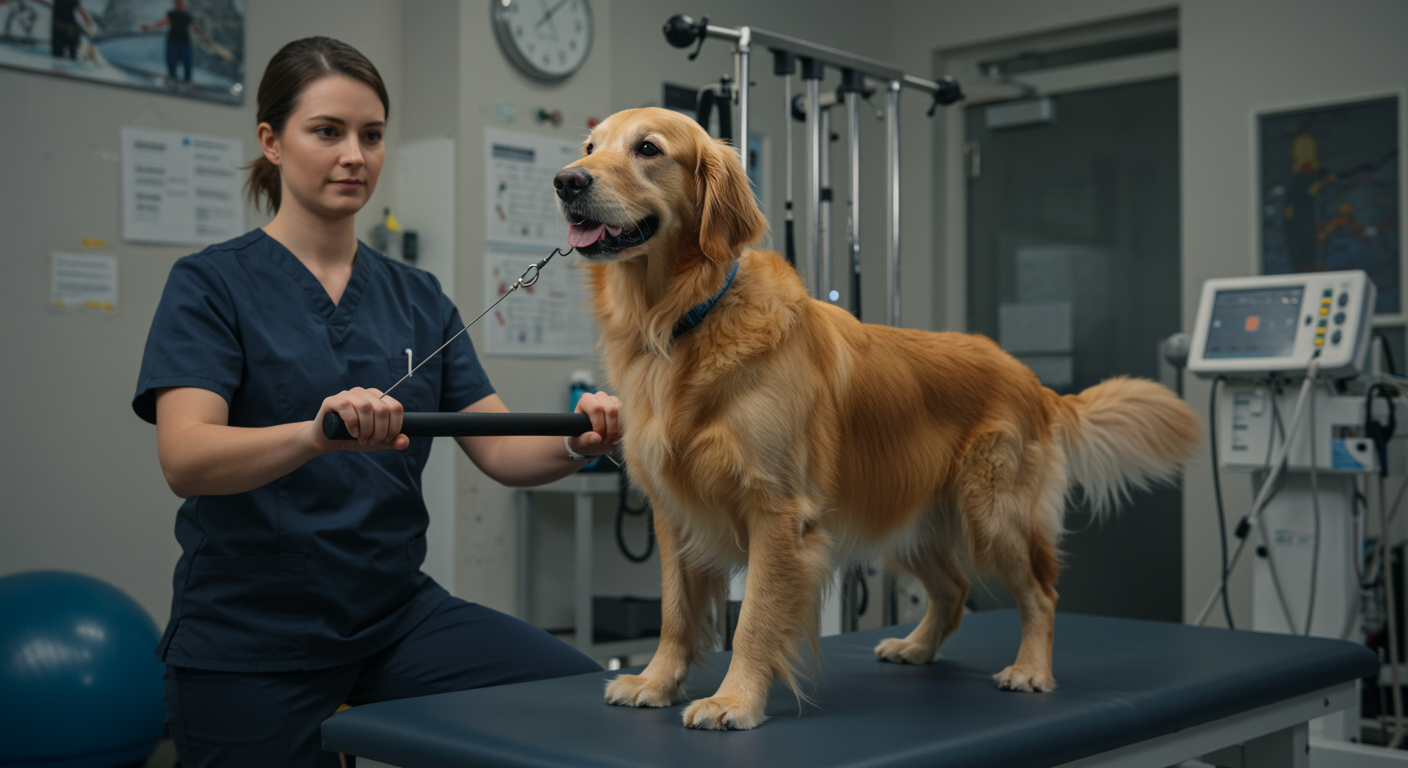
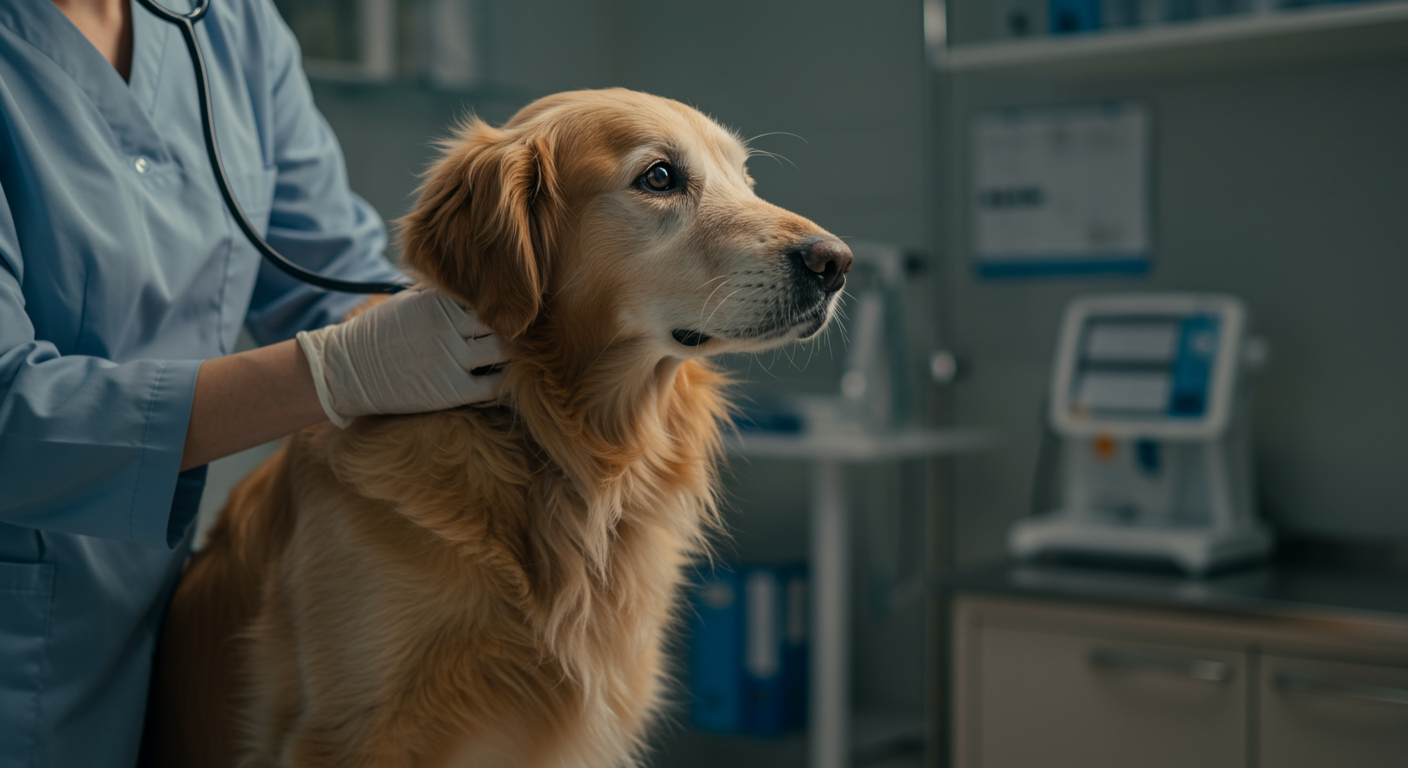
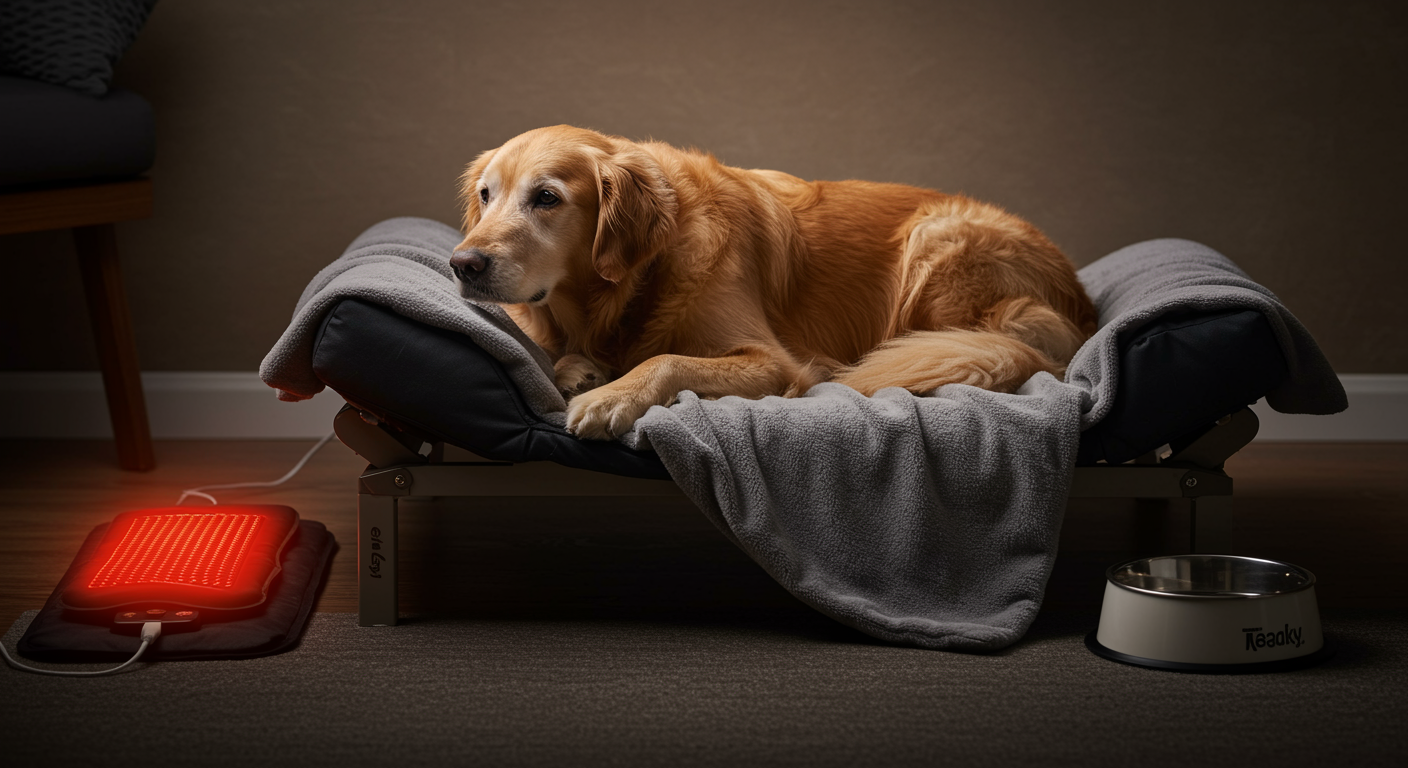
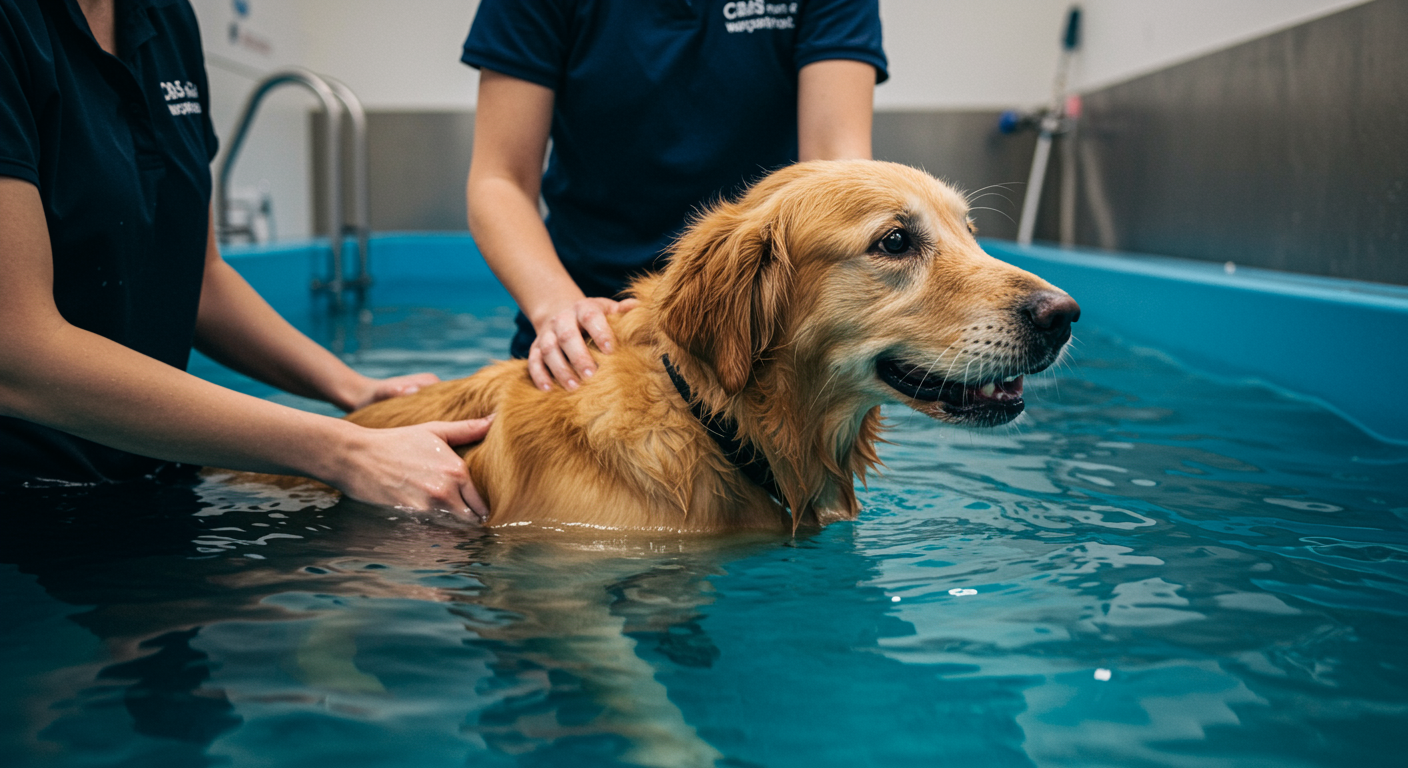
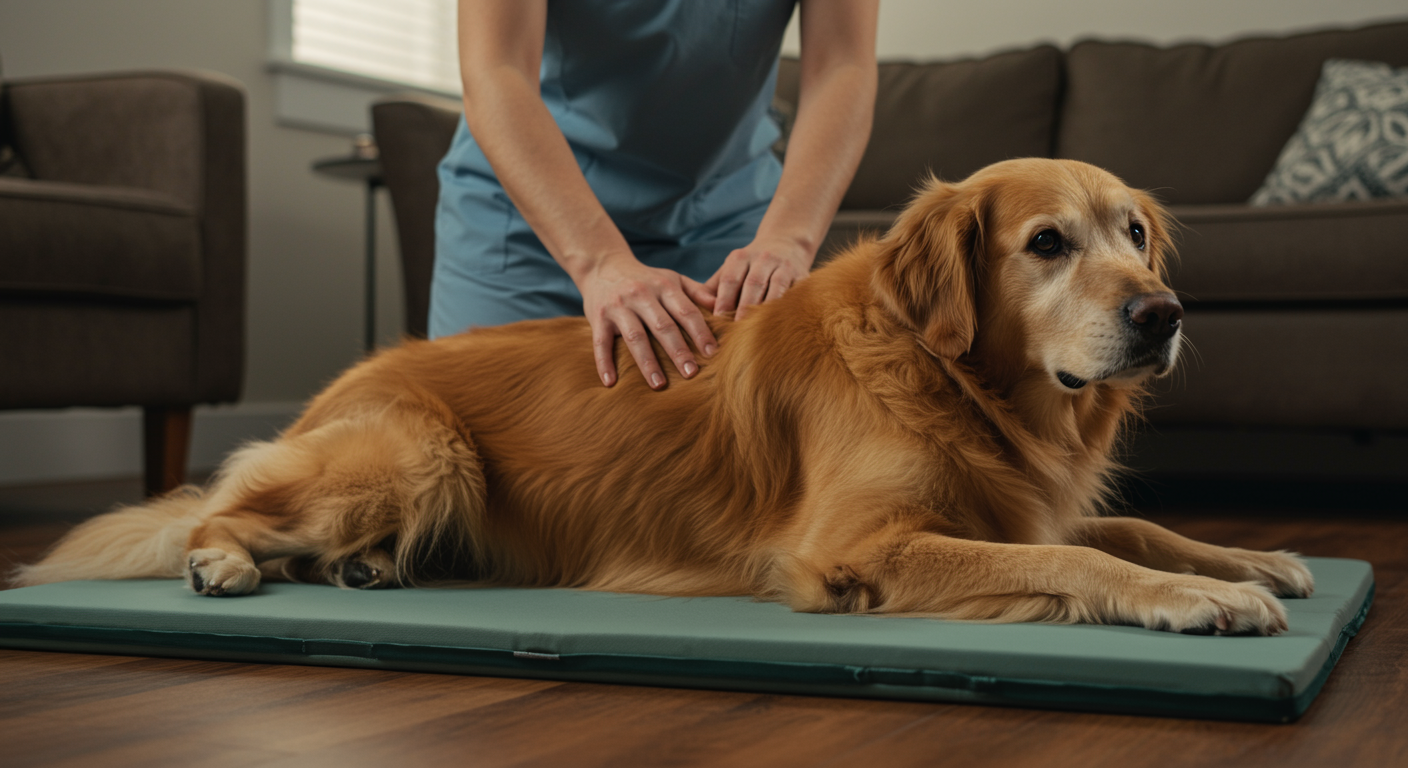
2 thoughts on “Canine Physical Therapy: Benefits for Aging Golden Retrievers”